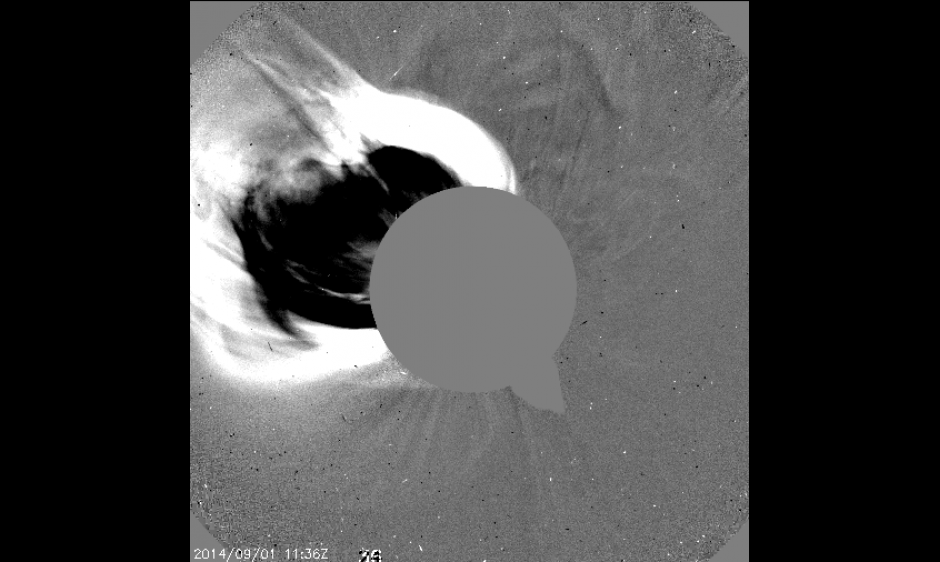
Back-sided Coronal Mass Ejection
The Sun produced a sizable and fairly fast back-sided coronal mass ejection (CME) on 01 September (shown here in an ESA/NASA SOHO LASCO image). The source of this eruption is believed to be old Active Region 2139, a region expected to rotate back onto the Earth-facing side of the Sun in the next few days. Despite the back-sided origin and a trajectory of this CME well away from Earth, an enhancement in high energy protons (both 10MeV and 100MeV) was still observed near Earth. It's difficult to say what this region will hold as it rotates into view, but some potential for continued activity is surely there.